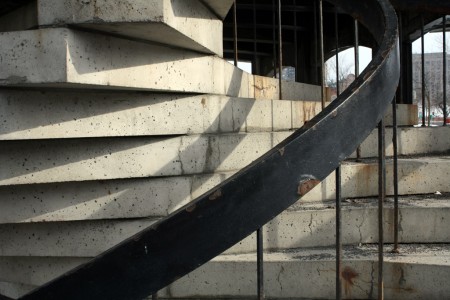The New York Times is reporting on how the Obama administration in the US is going to propose new regulations on the wastes from coal combustion, including coal ash of the kind that spilled so dramatically in Tennessee, causing $100 million in damage. The wastes contain toxins like arsenic, mercury, and lead at higher concentrations than in previous decades, partly because the scrubbers used to keep these toxins out of the plant’s air emissions lead to them ending up in the ash instead. In 2006, the National Research Council of the National Academies researched the mean concentrations of toxins in the ash: arsenic (43.4 ppm); barium (806 ppm); beryllium (5 ppm); boron (311 ppm); cadmium (3.4 ppm); chromium (136 ppm); chromium VI (90 ppm); cobalt (35.9 ppm); copper (112 ppm); fluorine (29 ppm); lead (56 ppm); manganese (250 ppm); nickel (77.6 ppm); selenium (7.7 ppm); strontium (775 ppm); thallium (9 ppm); vanadium (252 ppm); and zinc (178 ppm). In 2007, the National Academy of Sciences concluded that: “The presence of high contaminant levels in many CCR (coal combustion residue) leachates may create human health and ecological concerns.”
At present, coal ash facilities are regulated far less stringently than landfills for municipal waste, despite how they are fundamentally more hazardous. The new regulations will aim at preventing spills, as well as the leaching of toxins into the water supply.
It just goes to show that, even with effective carbon capture and storage technology, coal will probably never be a clean source of energy. By the time coal-fired power stations are required to mine, burn, and dispose of coal in a more environmentally benign manner, the cost advantages associated with coal are likely to vanish as well.


Coal Ash: The Hidden Story
How Industry and the EPA Failed To Stop a Growing Environmental Disaster
By Kristen Lombardi | February 19, 2009
Pat Nees never liked the water at the Moose Lodge. Almost everyone in tiny Colstrip, Montana, drank and dined at Lodge #2190, but the well water was notorious — it smelled like a sewer. It felt oily, gritty from sediment. Lodge members braving a drink — Nees among them — frequently doubled over from indigestion.
Nees, 57, a board member at the lodge, fielded numerous complaints about the water. But he and fellow Moose members, many of them equipment operators and technicians at the nearby Colstrip Steam Electric Station, a giant coal-fired power plant, never thought twice about the massive waste ponds a half mile away.
They never fathomed they were drinking water laced with coal ash.
Coal ash is the collective term for the various solid remnants left over from burning the black rock to produce electricity at more than 500 power plants nationwide. The ash amounts to dirty stuff, replete with toxic constituents — arsenic, chromium, lead, mercury, and many others — that can wreak havoc on the environment and human health. Exposure to its toxins can lead to cancer, birth defects, gastro-intestinal illnesses, and reproductive problems.
Human and Ecological Risk Assessment of Coal Combustion Wastes
Draft
Prepared for:
U.S. Environmental Protection Agency
Office of Solid Waste
Research Triangle Park, NC 27709
How is coal ash regulated in Canada?
I don’t know, and Google is not being immediately helpful. Canada has large coal power plants in Alberta, Saskatchewan, Nova Scotia, New Brunswick, and Ontario.
Rahall to move coal-ash legislation
by Ken Ward Jr.
The House Natural Resources Committee has scheduled a “markup” on Wednesday for Chairman Nick J. Rahall’s bill to regulate coal-ash impoundments under the federal Surface Mining Control and Reclamation Act.
…
Rahall’s legislation, HR 493, would require the Department of Interior to issue regulations that force coal-ash impoundments to meet standards “substantially similar” to those required for other coal-waste dams under SMCRA.
Ash and ye shall receive
EPA announces plans to regulate coal ash
Posted by Kate Sheppard at 7:05 PM on 09 Mar 2009
In response to December’s giant coal ash spill in Kingston, Tenn., the Environmental Protection Agency on Monday announced that it is beginning the process of regulating the waste ponds around the country.
The December spill spurred increased attention to coal-waste issues around the country. The 1.1 billion gallons of slurry flooded more than 300 acres of land and damaged homes in the area surrounding the Tennessee Valley Authority pond, and clean-up could cost up to $825 million.